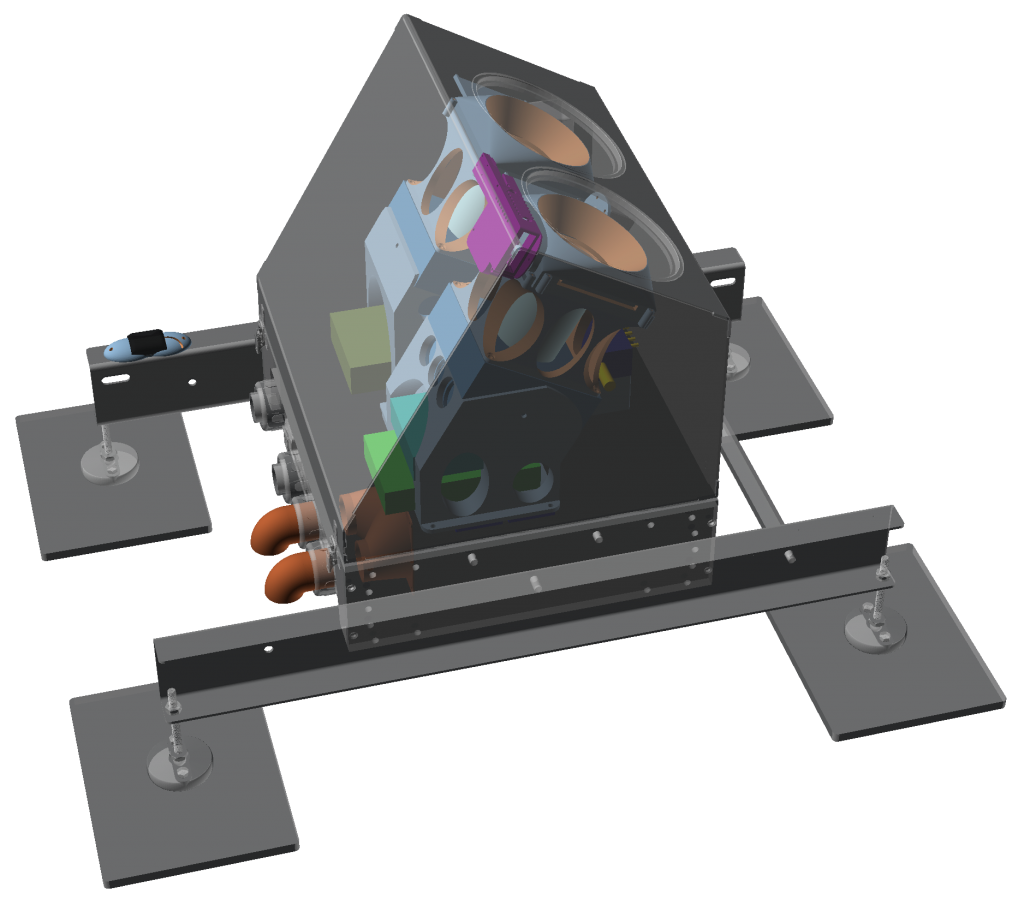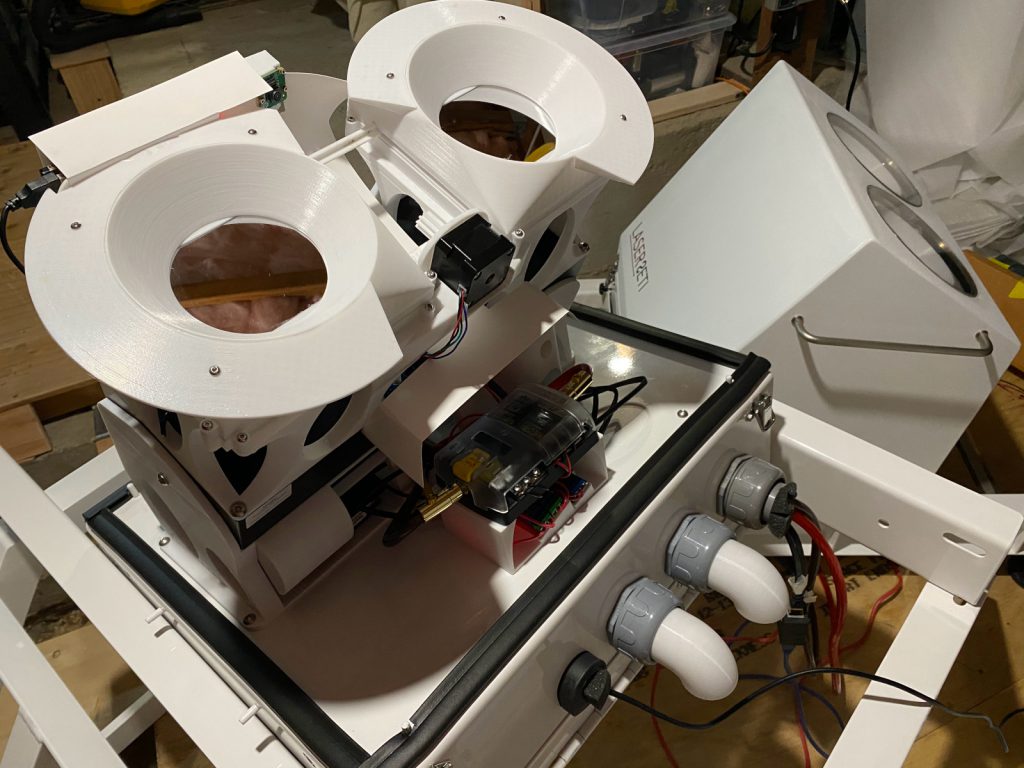The LaserSETI Instrument
LaserSETI is designed to be the first practical all-sky, all-the-time SETI project, with instruments specially constructed to detect laser pulses originating outside our solar system, operating as a network at a dozen carefully chosen observatories around the world.

Each instrument is made up of two wide-field, high-sensitivity cameras combined with a transmission grating that splits the incoming light into colors, much like a prism. The cameras use a modified version of the CCD readout technique called Time Delay Integration, which smears images out in one axis, but yields millisecond time resolution. The two cameras are looking in the same direction and oriented perpendicularly to allow for localization of events in both axes, as well as to provide additional confidence in observed events.

Cost is critical to the goal of being the first successful all-sky project. The cameras, lenses, and electronics are “commercial off-the-shelf” (COTS) with only the transmission grating and stainless-steel enclosure being custom made. 3D printing is used extensively to bring all the components together in an optimal but low-cost system. Each instrument contains a powerful computer capable of analyzing the incoming data in real-time, enabling timely event alerts and avoiding costly storage and/or transmission costs.
At A Glance
| Observational Technique | Slit-less Spectroscopy |
| Instrument Field-of-View (FOV) | 75 degrees in diameter 4395 square degrees of area (10.6% of celestial sphere) |
| Observatory FOV | 120 degrees across (30 degrees above horizon) |
| Instrument Data Rate | 104 Mbps |
| Limiting Magnitude | ~7.4 V mag (SNR = 5) |
| First Light | August 6, 2019 |
| Laser Sensitivity Limit | 5 light years for a 100 GW (500nm) laser* |
| Spatial Resolution | 1.44 arcmin/pixel per instrument |
*A 100 GW laser is not feasible with current technology, but will likely be in the future. For instance, Breakthrough Starshot has proposed to use a 100 GW laser to propel spacecraft to Alpha Centauri.